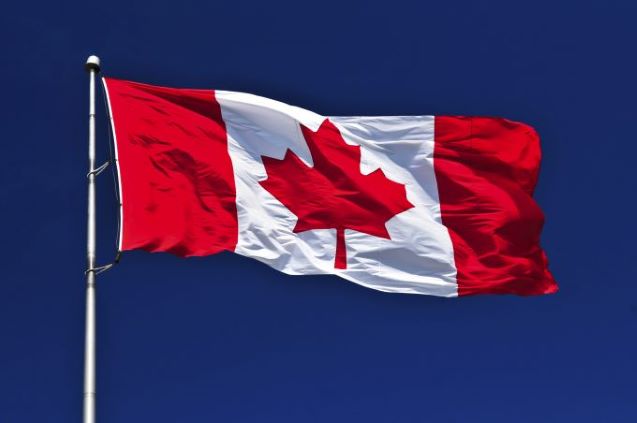HALIFAX, NOVA SCOTIA: A surge in applications for asylum in Canada is being attributed to a global pattern of human dislocation and a change in the nation’s regular visa policies intended to help clear a post-COVID backlog of applications that is impacting trade and tourism.
Figures published by Canada’s immigration, refugees and citizenship agency show that 7,280 asylum claims were processed in September, up from totals ranging between 3,880 and 5,550 over the previous five months.
That compares with an average of about 3,600 monthly claims processed during 2022 and fewer than 1,100 a month in 2021.
“The increase in asylum-seekers in Canada mirrors the global crisis of forced displacement,” said Idil Atak, a refugee expert at Toronto Metropolitan University.
“War, conflict, political instability, lack of freedoms, fear of persecution by state or nonstate actors [problems such as gang violence, domestic violence, impunity for perpetrators] are among the reasons why people seek refuge in Canada. Climate change is a major contributing factor,” she said in an email exchange.
Some analysts are also attributing the surge to a recent easing of requirements for regular visitor visas, which has made it easier for would-be asylum-seekers to enter Canada in order to apply.
The change, which temporarily removes requirements for visa applicants to show they have the means and intention to leave Canada at the end of their stays, was introduced in February but not widely reported until June, according to Immigration.ca, a website providing information for would-be immigrants.
“The Canadian government recently decided to waive certain visa requirements, specifically under section R179(b), which generally ensures that a person leaves Canada at the end of their authorized stay,” immigration expert Al Parsai said in an email exchange with VOA.
“This move was intended to reduce the backlog of Temporary Resident Visa (TRV) applications. … While the aim to reduce the TRV backlog is understandable, the government needs to carefully evaluate the broader implications of any policy change. Streamlining one process should not compromise the overall integrity of the immigration system,” he wrote.
The ways in which asylum-seekers arrive in Canada are also changing following a move in March to halt the flow of irregular border crossings, especially at Roxham Road, a remote location on the border between Canada’s Quebec province and the U.S. state of Vermont.
More than 4,000 people a month were being intercepted by Royal Canadian Mounted Police in Quebec before Canada and the United States amended what is known as the Safe Third Country Agreement so that people entering Canada through an unofficial entry point from the U.S. would lose the right to apply for asylum.
Since then, irregular land crossings into Quebec have dropped to the double digits while the number of asylum-seekers arriving legally at airports across the country has more than tripled, from 1,595 in March to 5,435 in September.
The Canadian government counts that as a policy success, helping to regularize the process of accommodating the new arrivals while easing some of the political pressures that the influx at Roxham Road had created.
Canada is “working diligently to bolster regular pathways that ensure the well-being of some of the world’s most vulnerable people and that are a safe alternative to the dangerous journeys many take when fleeing their country of origin,” Isabelle Dubois and Jeffrey MacDonald of Immigration, Refugees and Citizenship Canada said in a statement to VOA.
“The number of arrivals between ports of entry (i.e., irregular arrivals) has significantly declined since we expanded the application of the Safe Third Country Agreement in March 2023,” they wrote.
However, some analysts, such as Atak, worry that the shift will simply disadvantage those who are financially less well off.
“One can see the rise in asylum claims at airports as a result of the revised Canada-U.S. Safe Third Country Agreement,” Atak said. “These kinds of policies only divert migratory movements and don’t stop them. As unofficial land border crossings, such as Roxham Road, are not available anymore, asylum-seekers arrive in Canada through airports.
“The most vulnerable asylum-seekers are likely to be left behind since they typically don’t have the means necessary to take a plane to arrive in Canada,” Atak said.__VOA News





